Background
Julije Knifer was born on April 23, 1924, in Osijek, the Kingdom of Serbs, Croats and Slovenes (present-day Osijek, Croatia).

Ilica 85, 10000, Zagreb, Croatia
During the period from 1951 to 1957, Knifer studied at the Academy of Fine Arts Zagreb.
Julije with his wife Nada.



















Julije Knifer was born on April 23, 1924, in Osijek, the Kingdom of Serbs, Croats and Slovenes (present-day Osijek, Croatia).
During the period from 1951 to 1957, Knifer studied at the Academy of Fine Arts Zagreb.
In 1959, Julije became one of the founding members of the Gorgona Group, which also included Dimitrije Bašičević-Mangelos, Miljenko Horvat, Marijan Jevšovar, Ivan Kožarić, Matko Meštrović, Radoslav Putar, Đuro Seder and Josip Vaništa. Gorgona was neither an art movement, nor a group, but rather an informal union of artists, poets, critics and historians. The members of this union considered art and life to be paradoxical phenomena and the absurd to be an aesthetic value. Disillusioned with, or perhaps skeptical of, the lofty ambitions of bourgeois modernism, the Gorgona Group made work, that reflected a nihilist counter perspective.
In 1960, Julije began exploring such geometric form, as a meander. He created it in different painting techniques, such as print, oil, acrylic paint, collage and mural. Julije spent his life, exploring the motif's possibilities, as if on a quest to discover a form, that would express everything, that he wanted to say about painting, life, the universe and everything.
In 1961, the painter took part in the first New Tendencies' exhibition in Zagreb. He continued to participate in The New Tendencies exhibitions in subsequent years, namely in 1963, 1969 and 1973. Other exhibitions he took part in included "Art Abstrait Constructif International" at the Denise René Gallery, Paris, France (1961-1962), "Konstruktivisten" at the Städtisches Museum Leverkusen, Leverkusen, Germany (1962), "Oltre l'informale", San Marino (1963), the Venice Biennale (1976 and 2001) and the São Paulo Art Biennale (1973, 1979 and 1981, with Juraj Dobrović and Vjenceslav Richter).
Knifer spent the most productive, middle part of his career, living in a small flat in the Črnomerec District, Zagreb, looking after his daughter, Ana, during the daytime and painting meander pictures on the kitchen table at night. By the 1980's, Parisian galleries were enthusiastically promoting Knifer's work, and these French contacts enabled Knifer to move first to Sète, France, in 1991, and then, in 1994, to Paris, where he lived until his death in 2004.
It's worth mentioning, that, in 2010, Arnauld Pierre organized the painter's first posthumous exhibition at the Frank Elbaz Gallery in Paris.
Besides, it was Julije, who created the artwork for Jean Jaurès station on line B of the Toulouse Metro. The station was opened in 2007.
Julije Knifer was one of Croatia's most notable painters, who represented his country in the 1976 and 2001 Venice Biennale. He gained prominence for his work, which focused on one endlessly variable geometric form, which he called the meander. A maze-like shape of horizontal and vertical switchbacks, almost always rendered in black and white, this motif was the vehicle, through which he explored time and rhythm, and revealed the inevitable differences in any act of repetition. Knifer's meander became one of the defining symbols of Zagreb's famously avant-garde art scene from the 1960's onwards.
In 2002, Julije was the recipient of the Vladimir Nazor Award.
In 2016, Knifer's painting "PLS 69" (1969) was sold in an auction in Vienna for €137,000, which was at the time the highest price ever paid for a work of Croatian modern art.
It's worth noting, that Knifer's works are kept in numerous private and public collections around the world, including those of the Museum of Modern Art, New York City, United States; the Tate, London, United Kingdom; the Centre Pompidou, Paris, France, and the National Gallery, Berlin, Germany.
The central motif of Knifer's art is the exploration of meander, a geometric form, that he was creating from 1960 in various painting techniques, such as print, oil, acrylic paint, collage and mural. A bright example of this type of work is the colossal meander, created by Knifer on a 20x30 m canvas in a quarry in Tübingen (1975).
Julije found the framework for his approach in the music of Igor Stravinsky and the work of Kazimir Malevich and his avant-garde contemporaries, with whom he founded the Gorgona Group. Knifer considered each of his compositions as part of a continuum, one, which laid the ground for Western conceptual art.
The severe simplicity of Knifer's work is, above all, a kind of aesthetic distillation, that divorces form from not only its descriptive obligations, but also from its long-held role as a vehicle for symbolic and philosophical meaning. In this, Knifer's work paradoxically invites and rejects interpretation. The meander becomes a language one cannot understand, but which, like music, one is capable of intimately feeling.
Quotations:
"I wanted to go towards the minimum, towards simplification. After reading Stravinsky's phrase, that music is nothing but rhythm, I thought, why not apply this idea to a flat surface?"
"In 1959 I was obsessed with the idea of creating anti-painting. By a certain method of reducing forms and colours I achieved extreme forms of simplicity. The form of the painting was built in extremely contrasting colours - white and black... The initial stage of my work on canvas consisted of covering the canvas in white. This was already a spiritual part, or spiritual conception of painting... By adding black, white assumed form, or served for black to assume its form. And colours served solely to form the shape of the painting."
Julije was married to Nada Knifer. They had a daughter - Ana Knifer. Nada passed away on November 15, 2015.
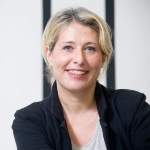
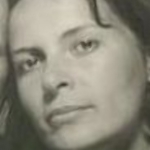
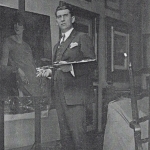
Petar Dobrović was a Serbian painter and politician. He was known for portraits and landscapes.
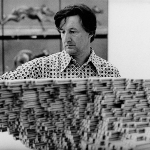
Vjenceslav Richter was a Croatian architect. He was also known for his work in the fields of urbanism, sculpture, graphic arts, painting and stage design.
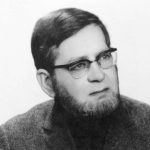
Dimitrije Bašičević-Mangelos was a Croatian artist, curator and art critic, whose artistic production included handmade books, sculptures and paintings. His work and research contributed greatly to the development of abstract art in Croatia.
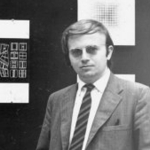
Miljenko Horvat was a Croatian artist, architect, author and illustrator. He spent much of his career in Canada.
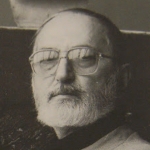
Marijan Jevšovar was a Croatian painter and founding member of the prominent Croatian art group, known as the Gorgona Group.
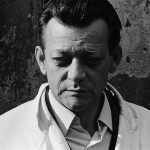
Ivan Kožarić is a Croatian artist, who works primarily with sculpture, but also works in a wide variety of media, including permanent and temporary sculptures, assemblages, proclamations, photographs, paintings and installations. He lives and works in Zagreb, Croatia.

Matko Meštrović is a Croatian Researcher Emeritus at the Institute of Economics, Zagreb. He was a leading figure in the international New Tendencies movement in the 1960's. Matko's publications cover interdisciplinary critical theory, art criticism and new information technologies.
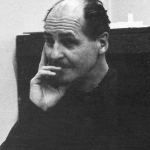
Radoslav Putar was a founding member of the Gorgona Group. He also headed the information department of the Centar za industrijsko oblikovanje (CIO), curated the Museum of Arts and Crafts, Zagreb, and headed of the Galerije grada Zagreba.
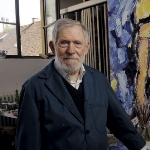
Đuro Seder is a Croatian painter. He lives and works in Zagreb, Croatia.
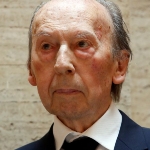
Josip Vaništa is a Croatian painter, who co-founded the Gorgona Group in 1959.
